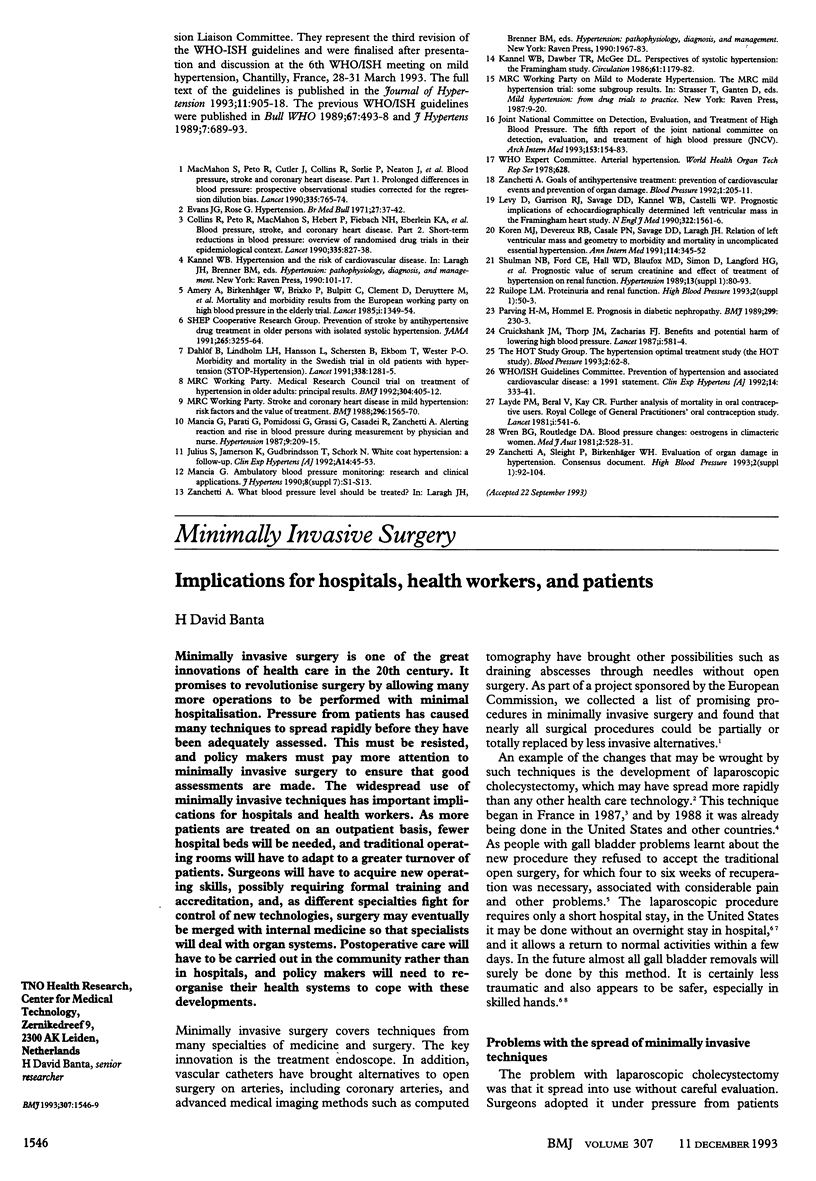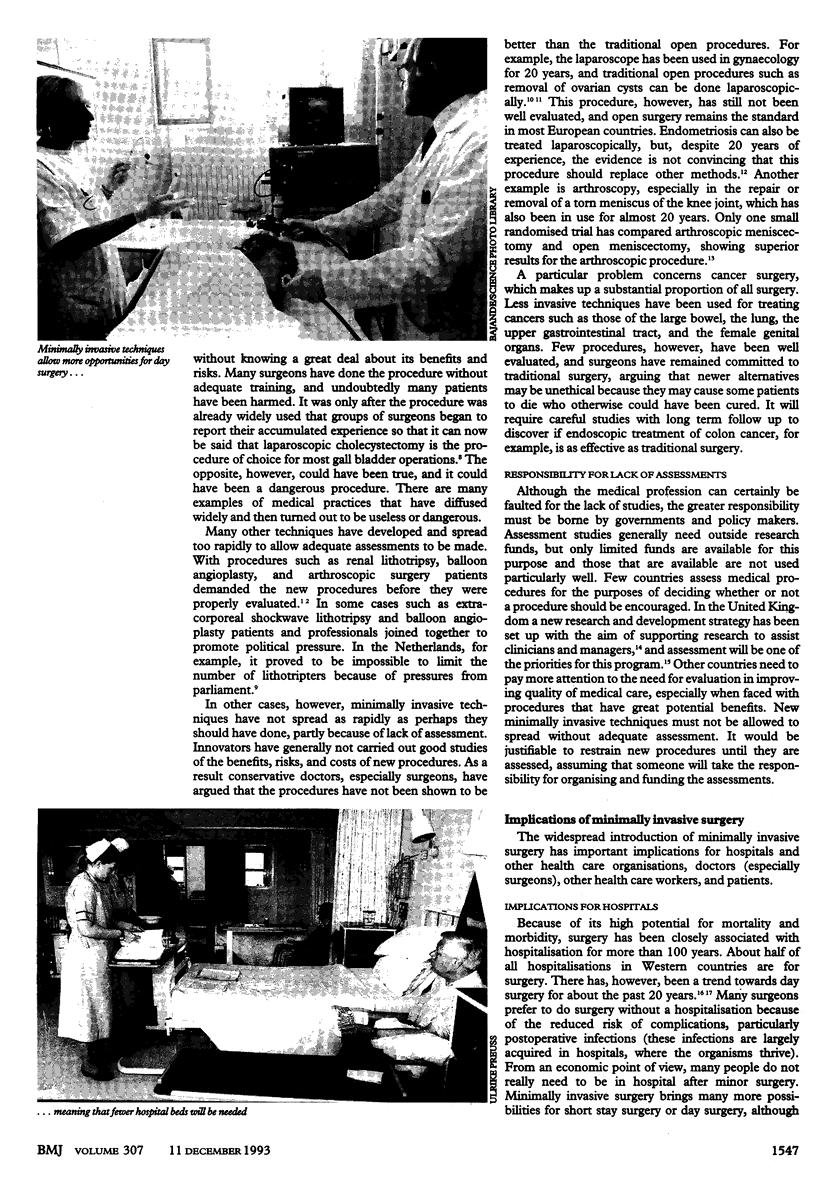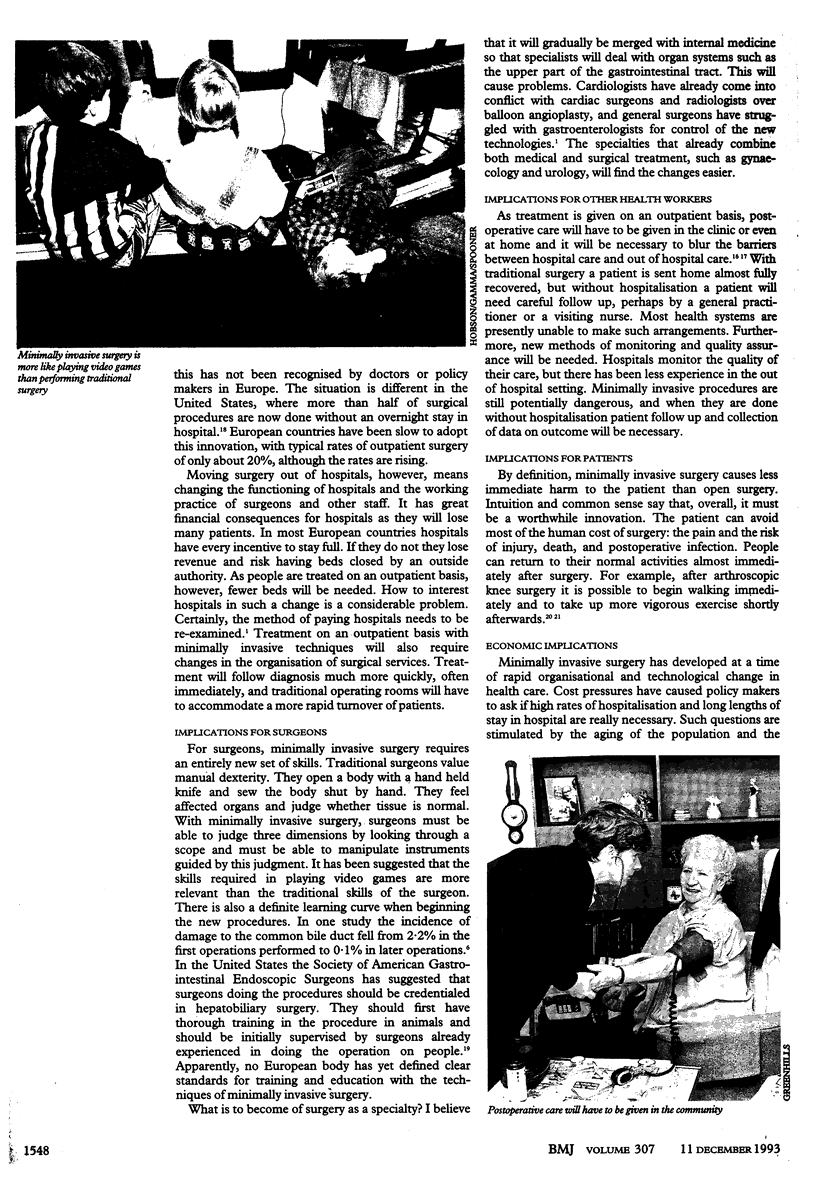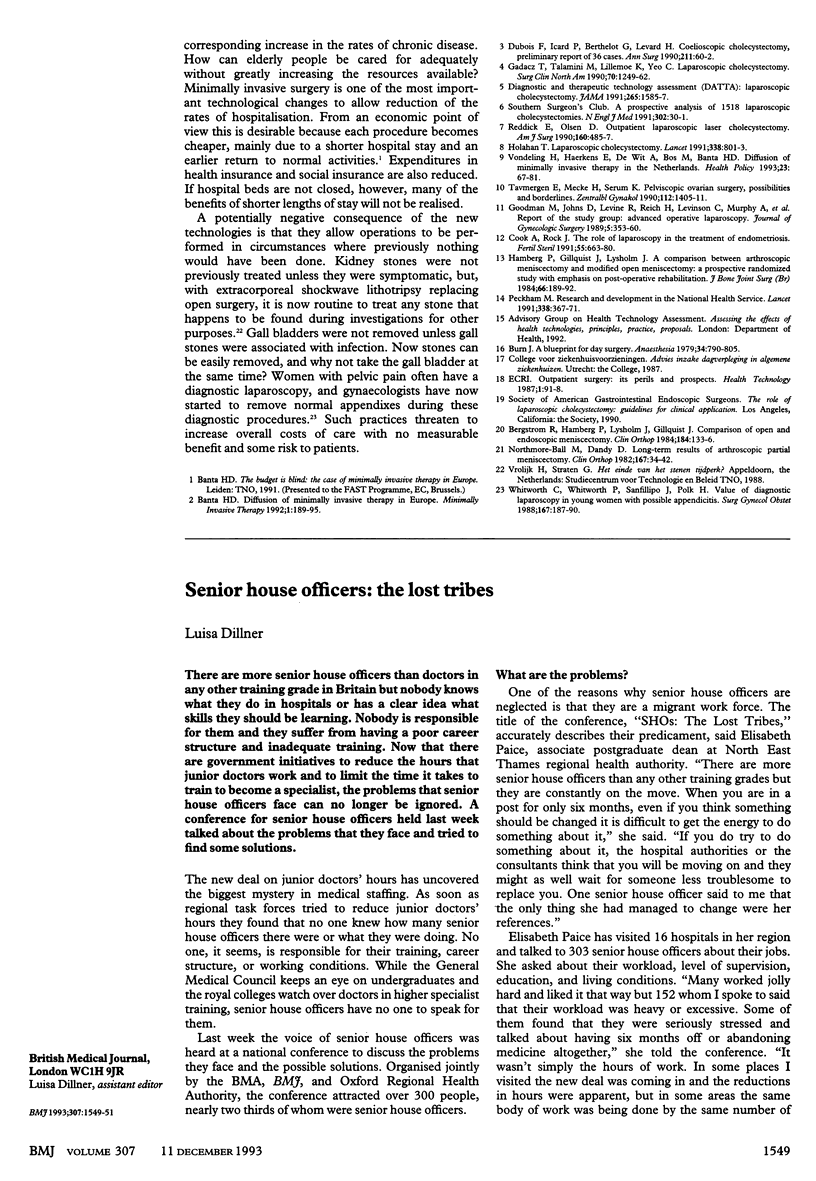Abstract
Minimally invasive surgery is one of the great innovations of health care in the 20th century. It promises to revolutionise surgery by allowing many more operations to be performed with minimal hospitalisation. Pressure from patients has caused many techniques to spread rapidly before they have been adequately assessed. This must be resisted, and policy makers must pay more attention to minimally invasive surgery to ensure that good assessments are made. The widespread use of minimally invasive techniques has important implications for hospitals and health workers. As more patients are treated on an outpatient basis, fewer hospital beds will be needed, and traditional operating rooms will have to adapt to a greater turnover of patients. Surgeons will have to acquire new operating skills, possibly requiring formal training and accreditation, and, as different specialties fight for control of new technologies, surgery may eventually be merged with internal medicine so that specialists will deal with organ systems. Postoperative care will have to be carried out in the community rather than in hospitals, and policy makers will need to reorganise their health systems to cope with these developments.
Full text
PDF



Images in this article
Selected References
These references are in PubMed. This may not be the complete list of references from this article.
- Bergström R., Hamberg P., Lysholm J., Gillquist J. Comparison of open and endoscopic meniscectomy. Clin Orthop Relat Res. 1984 Apr;(184):133–136. [PubMed] [Google Scholar]
- Burn J. M. A blueprint for day surgery. Anaesthesia. 1979 Sep;34(8):790–805. doi: 10.1111/j.1365-2044.1979.tb06413.x. [DOI] [PubMed] [Google Scholar]
- Cook A. S., Rock J. A. The role of laparoscopy in the treatment of endometriosis. Fertil Steril. 1991 Apr;55(4):663–680. doi: 10.1016/s0015-0282(16)54228-9. [DOI] [PubMed] [Google Scholar]
- Dubois F., Icard P., Berthelot G., Levard H. Coelioscopic cholecystectomy. Preliminary report of 36 cases. Ann Surg. 1990 Jan;211(1):60–62. doi: 10.1097/00000658-199001000-00010. [DOI] [PMC free article] [PubMed] [Google Scholar]
- Gadacz T. R., Talamini M. A., Lillemoe K. D., Yeo C. J. Laparoscopic cholecystectomy. Surg Clin North Am. 1990 Dec;70(6):1249–1262. doi: 10.1016/s0039-6109(16)45282-5. [DOI] [PubMed] [Google Scholar]
- Hamberg P., Gillquist J., Lysholm J. A comparison between arthroscopic meniscectomy and modified open meniscectomy. A prospective randomised study with emphasis on postoperative rehabilitation. J Bone Joint Surg Br. 1984 Mar;66(2):189–192. doi: 10.1302/0301-620X.66B2.6546759. [DOI] [PubMed] [Google Scholar]
- Holohan T. V. Laparoscopic cholecystectomy. Lancet. 1991 Sep 28;338(8770):801–803. doi: 10.1016/0140-6736(91)90678-i. [DOI] [PubMed] [Google Scholar]
- Northmore-Ball M. D., Dandy D. J. Long-term results of arthroscopic partial meniscectomy. Clin Orthop Relat Res. 1982 Jul;(167):34–42. [PubMed] [Google Scholar]
- Peckham M. Research and development for the National Health Service. Lancet. 1991 Aug 10;338(8763):367–371. doi: 10.1016/0140-6736(91)90494-a. [DOI] [PubMed] [Google Scholar]
- Reddick E. J., Olsen D. O. Outpatient laparoscopic laser cholecystectomy. Am J Surg. 1990 Nov;160(5):485–489. doi: 10.1016/s0002-9610(05)81009-8. [DOI] [PubMed] [Google Scholar]
- Tavmergen E. N., Mecke H., Semm K. Pelviskopische Ovarialchirurgie. Möglichkeiten und Grenzen. Zentralbl Gynakol. 1990;112(22):1405–1411. [PubMed] [Google Scholar]
- Vondeling H., Haerkens E., de Wit A., Bos M., Banta H. D. Diffusion of minimally invasive therapy in The Netherlands. Health Policy. 1993 Jan;23(1-2):67–81. doi: 10.1016/0168-8510(93)90007-c. [DOI] [PubMed] [Google Scholar]
- Whitworth C. M., Whitworth P. W., Sanfillipo J., Polk H. C., Jr Value of diagnostic laparoscopy in young women with possible appendicitis. Surg Gynecol Obstet. 1988 Sep;167(3):187–190. [PubMed] [Google Scholar]






